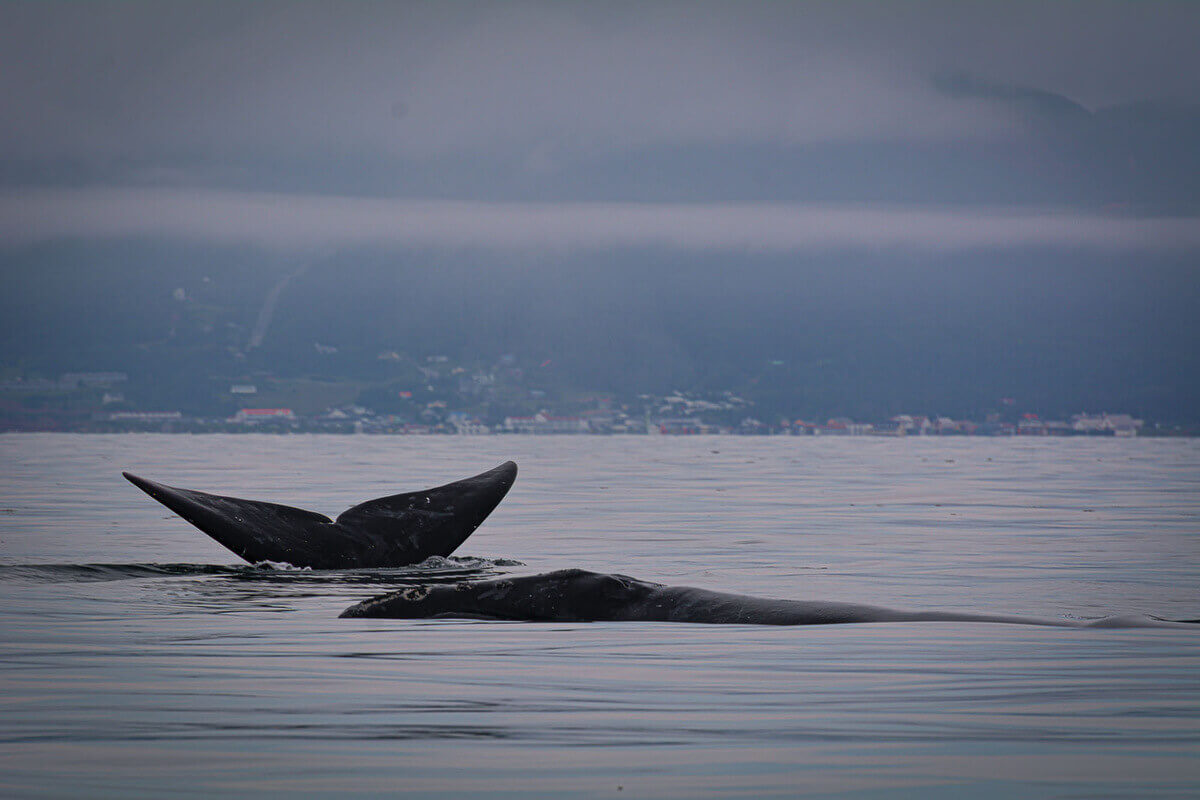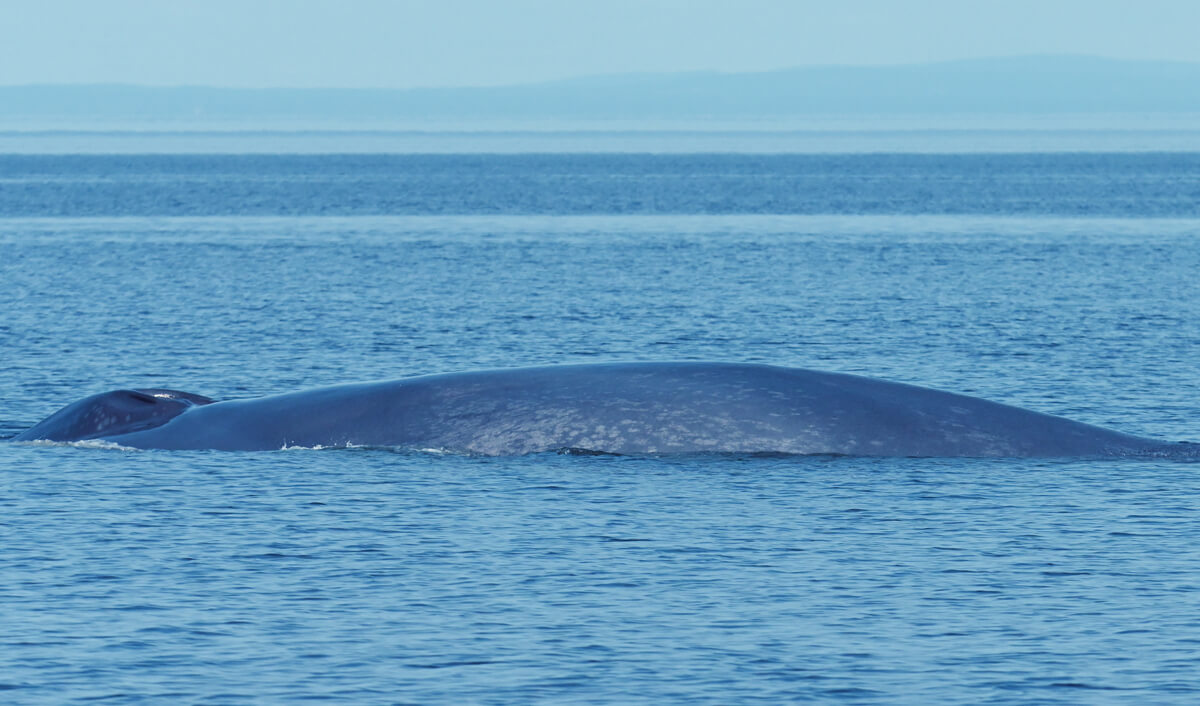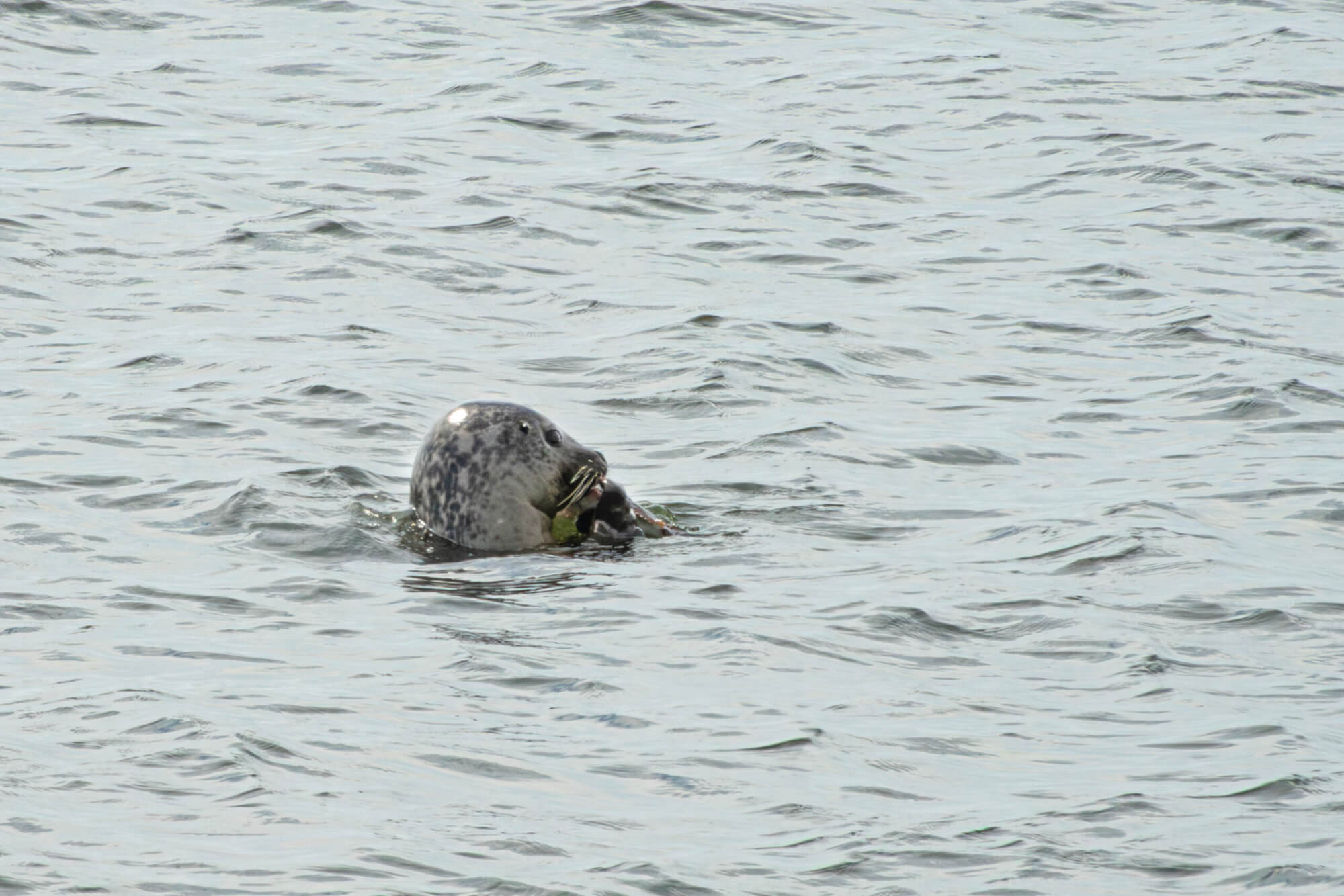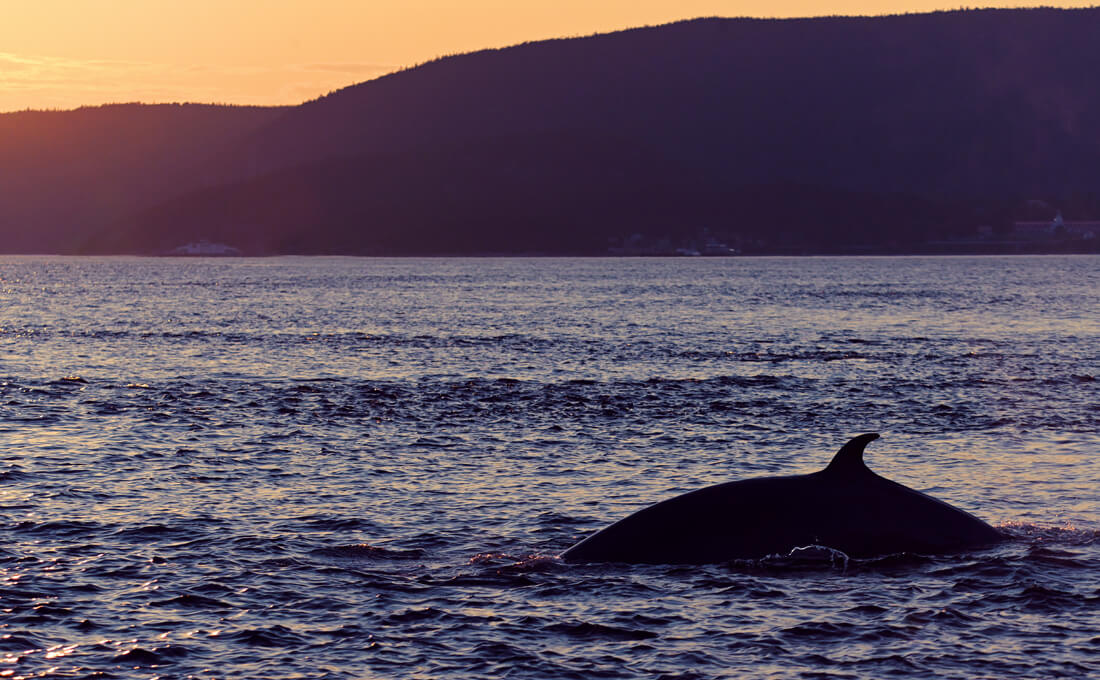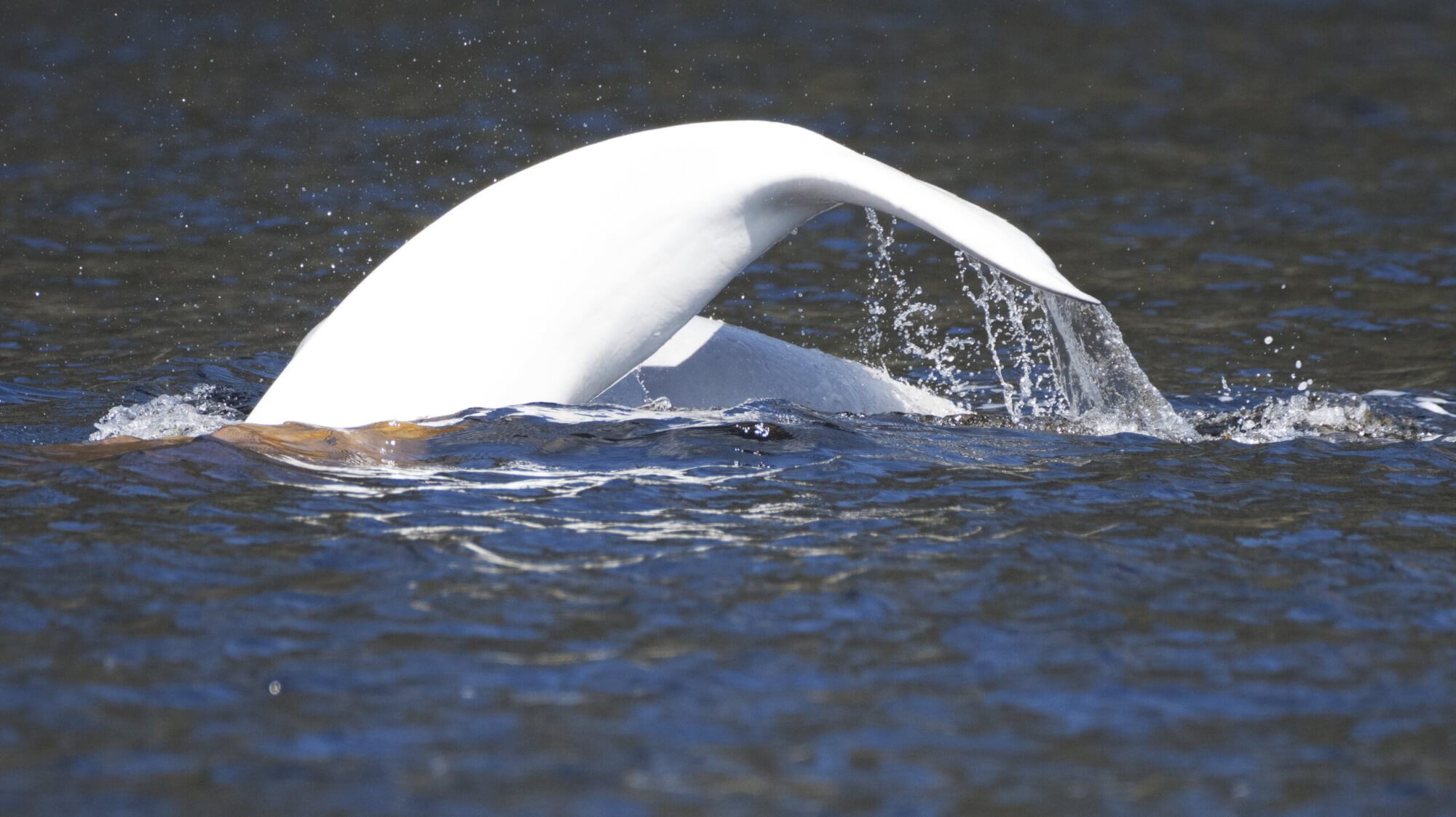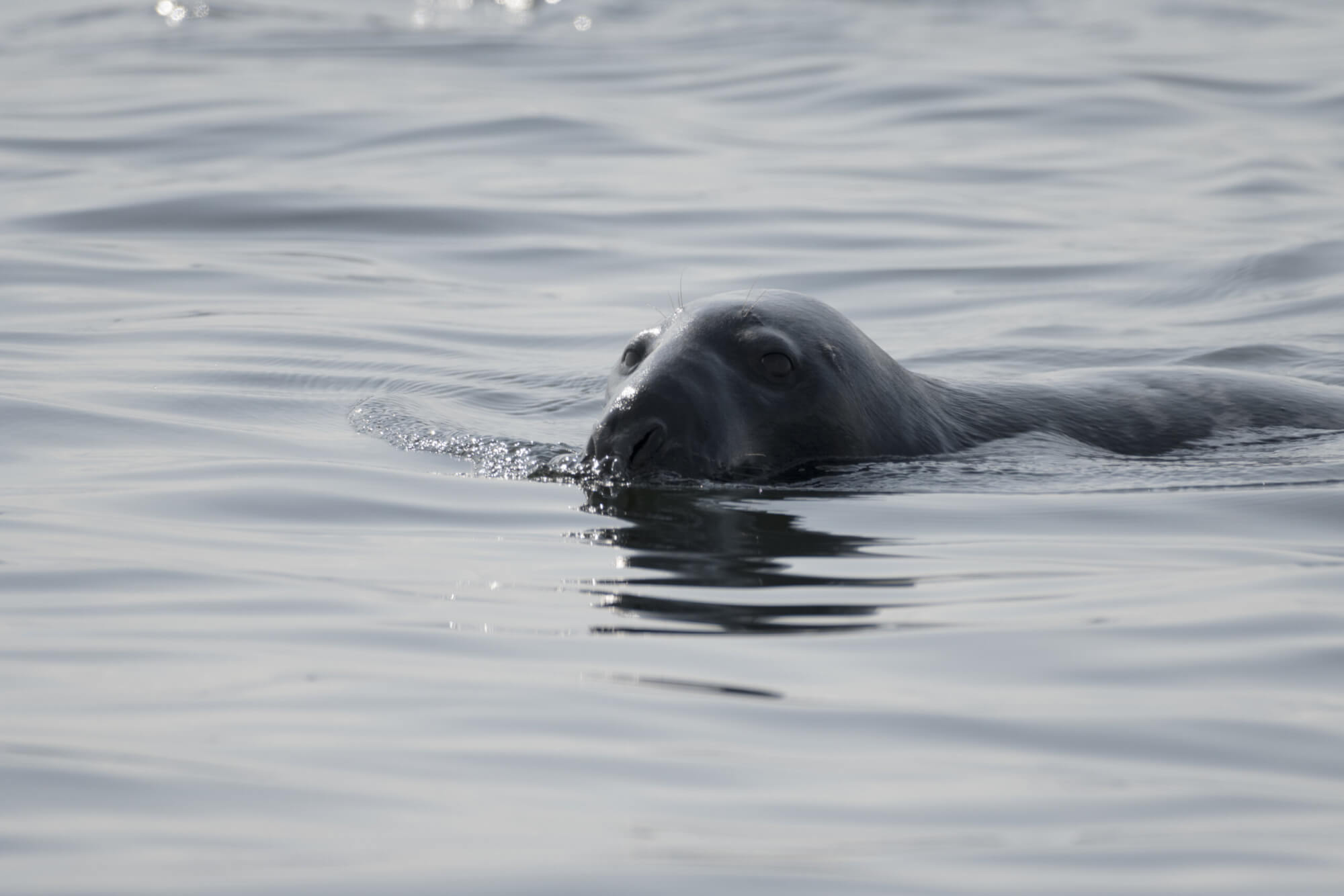What did the waters off Percé and those near Anticosti Island have in common this past week? Both were visited by North Atlantic right whales! Over the past week, the variety of marine mammals reported throughout the St. Lawrence has been impressive, with sightings of foraging minke whales, breaching humpbacks as well as blue whales, numerous porpoises and lingering pinnipeds.
Right whales between Gaspésie and Côte-Nord
The endangered North Atlantic right whale is known for its dire plight. The population is estimated at fewer than 350 individuals, which often fall victim to entanglements or collisions with boats. The species’ surface feeding habits and slow swimming make it particularly vulnerable. Also called the northern right whale or black right whale, two individuals of this species were seen off Percé, east of Bonaventure Island. Two individuals were also roaming Jacques Cartier Strait, that is to say between the Côte-Nord region and Anticosti Island. The Mingan Island Cetacean Study (MICS) was able to identify the individuals as Eg3380 (a.k.a. Lemur) and EG1307. The Whale Insight map displays North Atlantic right whale observations in Canadian waters. Their presence in the gulf coincides with the publication of a special edition of Portrait de Baleines (in French only) dedicated to the species. This is a weekly bulletin produced and distributed by GREMM during the summer months. It is intended for captains and naturalists who work on or along the shores of the St. Lawrence.
After being hunted for centuries, the North Atlantic right whale now faces a number of challenges, including entanglements in fishing gear, ship strikes and climate change. Since 2015, an increased presence of right whales has been noted in the Gulf of St. Lawrence, whereas the species used to frequent mainly the Gulf of Maine, the Bay of Fundy and the Scotian Shelf. A study published in the scientific journal Limnology and Oceanography analyzed sightings of this species made between 1990 and 2018 as well as food abundance. It concludes that prey availability has significantly declined in areas formerly frequented by right whales. The cetaceans then have no other choice but to seek refuge in the Gulf of St. Lawrence.
“Water ballet”
In Gaspé Bay, pleasant weather and the absence of wind made viewing conditions particularly favourable. Jean Roy, president of Croisières Baie de Gaspé, shares with us the marine mammals he has seen in the past week: “We regularly saw a blue whale, a few humpbacks, surface feeding minke whales, several porpoises as well as grey and harbour seals.” One event stands out a little from the others, however: “There was a double breach made by two humpbacks. Both individuals jumped at the same time, in almost perfect synchrony. It was a genuine aquatic ballet and a beautiful sight to see. When asked whether there have been any right whales in the area, he replies at once: “No right whales here! And anyway, even if there had been, we would not have gone to see them. It is an endangered species and you have to stay 400 metres away.”
Blue whales well represented
Off the coast of Les Méchins, the first blue whale in these parts of the St. Lawrence was spotted this year. For René Roy, a captain that collaborates with MICS, this encounter was particularly significant. “I hadn’t seen a single blue in this sector since October 2020,” he writes. They’ve become extremely rare in the St. Lawrence Estuary. Stealthy and evasive, it was very difficult to document due to the fog and the fact that it was moving very quickly. Another blue whale was seen near the Mingan Archipelago.
In the estuary, blue whale B236 (a.k.a. Galinule), which was seen last week, was observed once again. A new individual was also identified by GREMM’s research team: B489, which visited the estuary in 2012 and 2014.
A week chock-full of sightings!
In the Mingan Islands, three fin whales and three humpbacks were seen, as were plenty of minke whales. Hundreds of porpoises were also present. Near Sept-Îles, two or three humpbacks and one fin whale were tallied. One resident had the opportunity to capture pictures of a harbour seal in the process of feeding: “A splendid harbour seal, last Friday, July 21 around 11 a.m. in the Bay of Sept-Îles, not far from the docks known as Vieux-Quai. It dove a lot, never stayed on the surface for too long; it must’ve been foraging for food, and I even had time to shoot a photo of it with prey in its mouth.”
In Baie-Comeau, one marine mammal enthusiast shares a colourful outing on the water! “On the way back, spouts were erupting in the distance, very close to the Baie-Comeau marina. When we got a little closer, we were able to determine that there were three humpbacks diving and… we clearly saw a huge column-shaped blast, but only one time. I really think it was a blue whale! A minke whale and a few grey seals were also seen on the trip. But then the setting sun reminded us that it was time to return to shore.” Porpoises, a harp seal, and several minke whales were also observed.
In the Saguenay-St. Lawrence Marine Park, diversity is at its peak. The large gathering of minke whales at the mouth of the Saguenay was even dubbed a “minke whale festival.” Belugas and grey seals were also observed in the same area. At Cap de Bon-Désir, two humpbacks put on quite a display on the evening of Saturday, July 22, with one of them breaching four or five times. Harbour porpoises were spotted, one of which stood out from the rest: it was almost white! This was not the first time that white porpoises were spotted in the estuary. It is believed that this most recent sighting was a case of either leucism or albinism. It’s almost as if this was the week that we went from black to white!
Where are the whales this week? Observations map
These infomations were reported by our network of observers. They give an idea of the presence of whales and in no way represent the actual distribution of whales in the St. Lawrence river. Simply use it for fun!
Click on the whale or seal icons to discover the species, the number of individuals, additional information or photos of the sighting. To enlarge the map, click on the icon in the top right-hand corner. The map works well on Chrome and Firefox, but not so well on Safari.
To display the list of sightings, click on the icon in the top left-hand corner.


